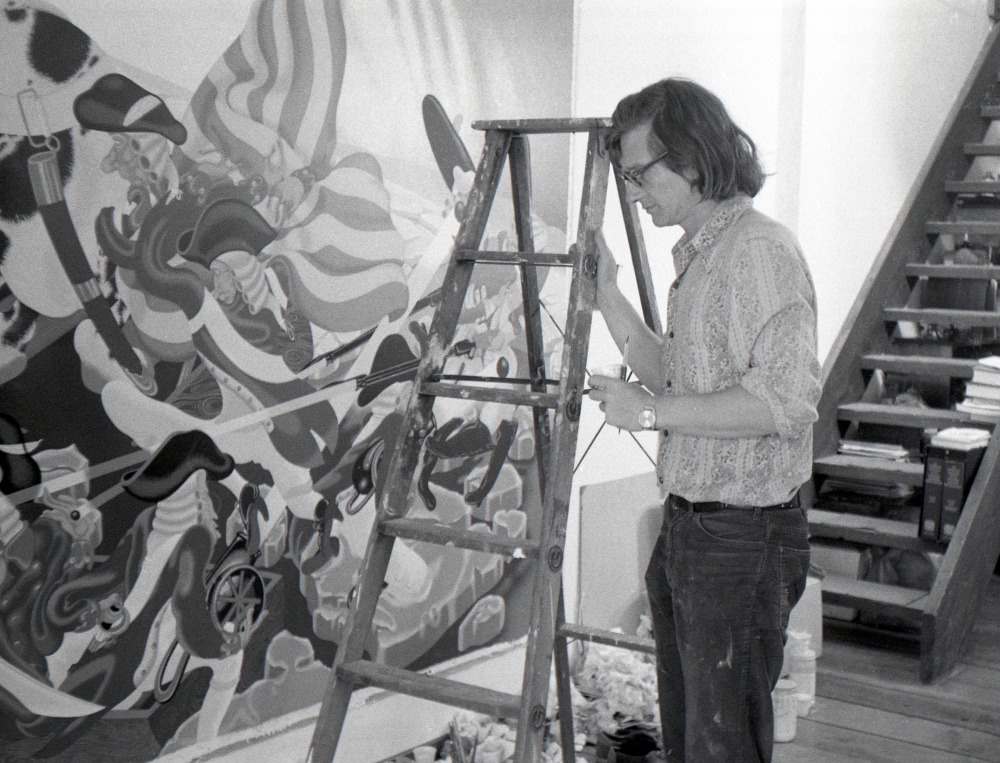
Peter Saul working on Washington Crossing the Delaware, 1975.
In 1975, Peter Saul relocated from California to Chappaqua, New York. This photo was taken during a studio visit soon after his move, while Peter was working on his version of Leutze’s Washington Crossing the Delaware. It, along with three other major history paintings, was shown at the gallery later that year in the aptly named exhibition, “Peter Saul: Four Big Paintings.” Of the four, two were based on subjects he had tackled previously, Picasso’s Guernica and Paxton’s Custer’s Last Stand - all measure in at over ten feet long.
Saul later explained “at that point I took the last (only) big pictures I’d made, the Vietnam ones, and altered them to relate to - to begin with - the only pieces of existing art I ‘agree’ with, that is, the ‘full-up’ Old Masters - Rembrandt, Delacroix, Rubens, Tintoretto.
"…traditional historical importance plays no part in my choice amongst these old (older) pictures. Paxton's Custer inspired as much work from me as Nightwatch or Guernica, and complicated, figurative, more modern painters like T.H. Benton, Beckmann, even De Kooning and Bacon, can be treated equally if I find an example of their work suitable for my purposes. The only difference being that where the inspirational old picture still is sort of alive like Nightwatch or Guernica, I stick closer to the original (whereas with George Washington I only keep the basic idea: water, ice, boats, etc. because the original composition is too remote (dead) or un-famous (noncontroversial)).”
Whether Peter considered the Leutze remote or un-famous is not clear, though if his goal was to transform the painting into a controversial one, he was successful, as this anecdote makes clear. Some years later, curator William Lieberman from the Metropolitan Museum came by the gallery and announced that the Met needed to have a painting by Peter Saul in its collection. The new wing that housed the contemporary collection had just opened and Lieberman was in charge of the installation. As George Adams tells it,
"I was happily delegated to select four or five paintings for him to propose to his collections committee; flipping through the slide book of Peter's available works, I pulled several candidates, including Washington Crossing the Delaware. Showing the selection to Allan we agreed that Washington was a perfect - and hilarious - choice. Without much further ado the set of slides was mailed to Bill.
A week or so later the phone rang. It was Lieberman informing us of the committee's decision to acquire View of San Francisco #2. As for Washington, he reported with embarrassment that the committee was NOT amused and more likely insulted by the suggestion. Allan and I were stunned and disappointed - and I still think it would have been a great addition to the collection."
What the collections committee thought of the painting, we may never know, though perhaps they felt that Peter's somewhat blasphemous version of this iconic American scene was not fit to share space with the original, which has long been a cornerstone of the Met's collection.